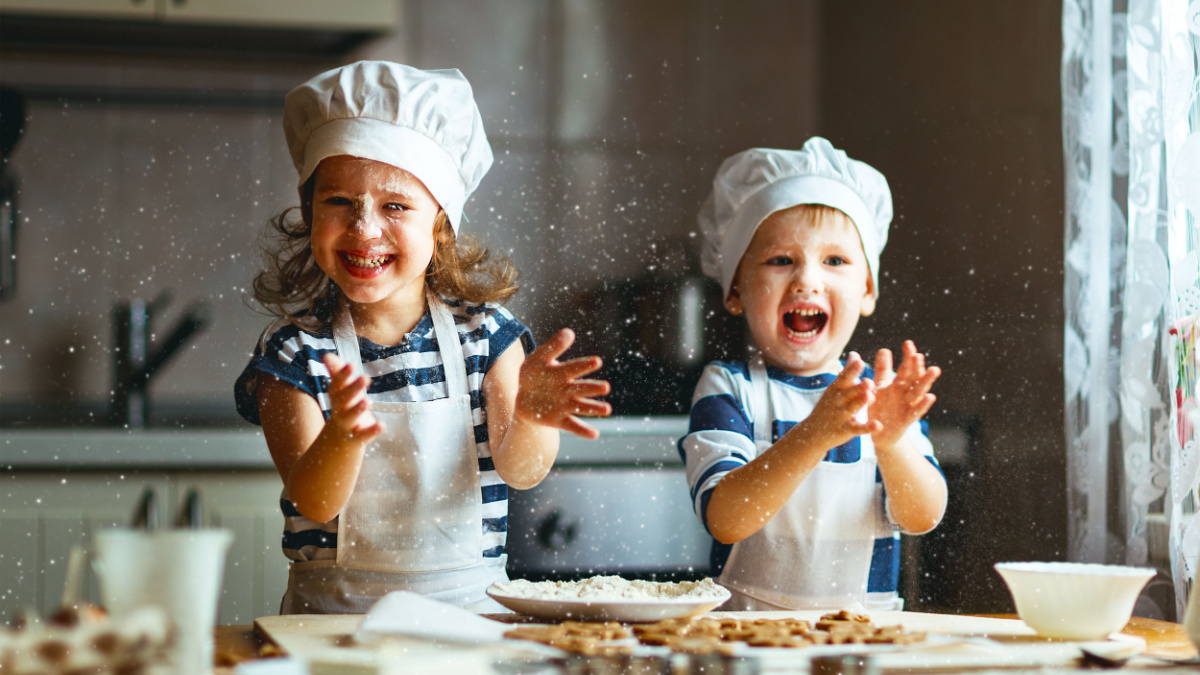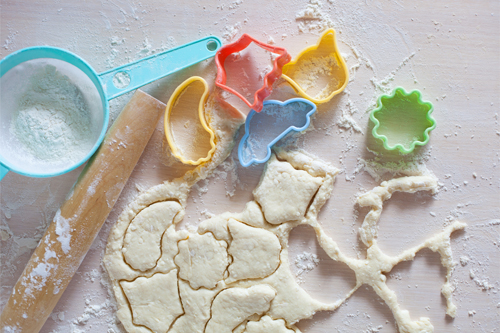Kids in the kitchen

Home Economist, Amanda McCloat, reminisces on cooking at home when she was a child and the joy it brought.
Do you remember when you first learned how to prepare food or help in the kitchen?
For me, my mum always encouraged me and my siblings to help her in the kitchen, including the washing up. From an early age we helped her with daily dinners and baking especially apple tarts and fairy buns (now fashionably known as cupcakes!).
When I think back, I am sure we were often more of a hindrance than a help; but we loved it and we were constantly encouraged. This was then further developed when I studied Home Economics for five years at secondary school. I have to admit that my experiences as a child in the kitchen and in the Home Economics classroom led me to pursue a career as a Home Economics teacher where I got to pass on essential food lifeskills, including cooking, to the next generation.
Allowing your child to help in the kitchen has a number of benefits:
- It can develop their motor skills
- It can encourage patience and teamwork
- It can improve confidence and develop their literacy and numeracy skills from reading recipes to and measuring ingredients
The kitchen can be an exciting place for children with so many sights, smells and sounds – so why not get started!
How to involve kids in the kitchen …
People often ask when a child should start to cook. There is no exact age for starting but generally children should be encouraged to become involved with basic food preparation skills as soon as they show an interest.


If you can, buy some children’s cooking utensils such as small rolling pins; small plastic bowls; plastic covered biscuit cutters; mini whisks; mini pastry brushes etc. These can be found in supermarkets and discount store but don’t worry if you can’t find them.
Make sure to have a chair safely positioned so that the child can reach the unit or counter where the food is being prepared.
Here are some guidelines to help you and your child get started:
- 3 year olds can help by…
putting bun cases in a tray (helps develop motor skills); using child friendly biscuit cutters; adding small ingredients (e.g. dried fruit) to the mix etc. - 4 - 5 year olds can help by…
whisking eggs; stirring liquid ingredients; adding dry ingredients; sifting flour; rolling cookie dough etc. - 6 - 8 year olds can help by…
measuring ingredients; spooning the mix into cases; kneading dough; arranging toppings on e.g. pizza / sandwich; preparing fruit for a Smoothie; preparing small snacks etc. - 9 – 11 year olds can help by…
preparing baked products under supervision; chopping fruit and vegetables; preparing dough; making fruity muffins; mashing potatoes; preparing pasta dishes; making pizza (allow them to name the pizza e.g. Paul’s Pizza!); using food preparation equipment under supervision etc.
Try and encourage your child to practice safe and hygienic food preparation from an early age. I find if you reinforce kitchen safety to children of all ages and encourage them to practice good habits, like hand washing from the start.
Most of all, enjoy and have fun with kids in the kitchen. There will be spills and foods dropped but that’s part of the experience for kids. Over time, the skills learned and fun had will foster a healthy interest in food and leave you all with lasting memories, like me, of the fun times shared in the kitchen …
So go on, what are you waiting for?!
You’ll find loads of recipe ideas here.




